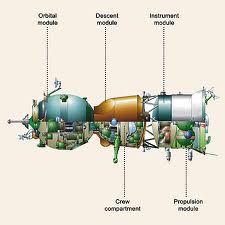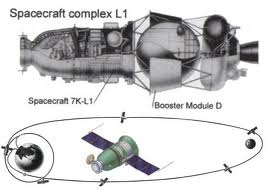The Space Race was both ideological and technical. Which of the two nations, the United States or the Soviet Union had the means to solve the technical challenges posed by President Kennedy’s goal to send humans to the Moon and return them to Earth before 1970?
We are more familiar with the American story, starting from behind, developing a 3-stage program with Mercury, Gemini and finally Apollo, building heavy launch capacity with the Saturn rocket program and culminating with a successful mission to the Moon and back with Apollo 11 in July of 1969. The American program was not without human loss of life with a poorly designed spacecraft burning up on the launch pad in January of 1967, an accident that almost derailed the entire program. But the Americans persevered and dramatically accomplished what a decade before would have been considered an impossible feat.
Far less is known about the attempt by the Soviet Union to achieve a similar feat. For the Soviet Union, the American President’s announcement, represented an unexpected development. Unlike the United States which had established the National Aeronautics and Space Administration (NASA), a single entity to organize the effort, the Soviets were encumbered by a lack of consistent leadership and direction coming from the political organization and military within the country.
The initial “firsts” that characterized the Soviet space program in the late 1950s and early to mid-1960s triumphs gave way to little successful follow-up. Unlike their American counterparts, the Soviets had no structured plan and muddled aims to drive the evolution of their space technology. The constant intervention of the military compromised civilian objectives. When plans were made to launch a low-Earth orbit permanent space station, the military intervened to try to arm the platform. Eventually with the easing of Cold War hostilities the project was permanently shelved.
The Soviets failed to develop the heavy thrust capability of a rocket equal to the American Saturn-V. Instead they continued to use the R-7 for human spaceflight and developed the N-1 and UR-500 (also known as the Proton), two rockets capable of putting much larger payloads into Earth orbit. The lack of reliability made them unsuitable for human spaceflight.

The Soviets built a prototype maneuverable spacecraft called Soyuz with similar capability to the Gemini of the American program. First conceived in the late 1950s, Soyuz was fraught with design faults.
When combined with the numerous technical challenges in their heavy lift rocket program, the Soviet goal of getting to the Moon before the United States increasingly appeared to be out of reach. When Soyuz finally did launch with a cosmonaut on board in April of 1967 the mission ended in tragedy with the death of Vladimir Komarov, a veteran of the program.

The Soviet plan similar to Apollo was heavily dependant on the reliability of the heavy lift N-1 rocket. The UR-500, a middle-lift capable rocket, suffered from its own numerous launch failures but became the primary rocket in an attempt to get to the Moon. The idea the Soviets considered involved launching payloads into low-Earth orbit, assembling them into a spacecraft and then going to the Moon. For the government such an achievement would mark the 50th anniversary of the Bolshevik Revolution.
But the Soviets continued to experience technical challenges.The dramatic lead they enjoyed was quickly coming to an end. Occasionally they could still pull off another “first,” but these were no longer around human flight milestones. Instead the Soviets successfully launched and landed a lunar probe on the surface of the Moon in 1967. sending back a few pictures before the probe failed. This was followed by a second satellite placed in lunar orbit. With no camera on board, the Soviets had nothing to show but announced their triumph with an onboard recording of the “Internationale” beamed back to Earth.
Soviet attempts to launch a manned circumlunar flight in 1968 never happened. Instead numerous unmanned test craft were launched, many succumbing to failures on the launch pad, in low-Earth orbit or upon re-entry. In 1968 a new mission was conceived using a modified Soyuz 7K-L1 capsule. Designated Zond, the plan was to send a cosmonaut to the Moon and back in a non-orbital loop (see the flight path in the diagram below).

Only one Zond launch was successful and it took place in August of 1969, a month after the United States landed two astronauts on the Moon. The Soviet program had failed.








